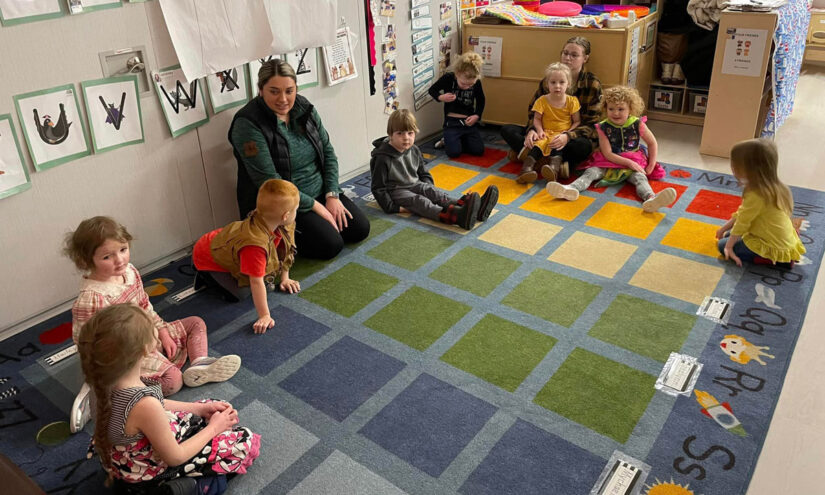During this summer, a team of students from MIT embarked on a journey to the sou …
Alaska’s Head Start Programs Pay Close Attention to Biden’s Proposal to Boost Salaries
Jennifer Livingstone

Alaska’s largest early childhood program is Head Start, which is a federally-funded program for children from low-income families.
Child care and early education centers, including Head Start programs, have been seeking financial assistance in recent years to address the challenges of paying staff and keeping prices affordable for families.
Khari Garvin, the director of the Office of Head Start at the U.S. Department of Health and Human Services’ Administration for Children and Families, stated that the Biden administration has proposed increasing the pay for Head Start teachers. Garvin explained that the salaries of Head Start teachers have not kept up with those in other industries. He recently visited Alaska and noted that the feedback he received there aligns with what other programs across the country have reported. Some programs have had to close classrooms due to the difficulty of hiring qualified staff, including teachers.
The proposed rule aims to increase the average salary of Head Start teachers by $10,000, provide improved benefits, and enhance access to mental health support. These changes are responses to the workforce crisis in early child care, which has led to the closure of 20% of Head Start classrooms nationwide, despite existing waiting lists for children to enroll in the programs.
Once a final rule is published, Garvin explained that it can be funded through two methods. Firstly, Congress can allocate the necessary funding to increase staff pay for Head Start. If Congress does not provide or fully fund the rule, individual Head Start Programs will need to work within their budgets to implement the salary changes.
Mark Lackey, Chair of the Government Affairs Committee for the National Head Start Association and operator of five Head Start programs in the Mat-Su Borough, emphasized that both Congress and the state of Alaska have under-funded the Head Start program for years. Consequently, finding the funds to significantly raise wages will be challenging.
Lackey humorously suggested that perhaps children could draw dollar bills that could be cashed to cover the wage increases. However, he underlined the serious consequence of wage increases without adequate funding – programs would have to sacrifice child slots. Even with high demand for child care and early childhood education, Lackey has had waiting lists at his programs since before the pandemic, but cannot fill all available slots due to insufficient staff. This is a common situation in many Head Start programs nationwide, where only about 80% of staff positions can be filled. Departing teachers often cite low wages as the reason for leaving. Despite hiring 150 people in the last two years, Lackey still faces a staff shortage as many employees have moved on to higher-paying positions.
Lackey pointed out that the proposed $10,000 boost in wages would not even bring his employees’ salaries up to a competitive level. The federal government suggests aligning Head Start wages with those of teachers – the average Kindergarten teacher earns approximately $58,000 per year, while Lackey’s Head Start staff receive salaries in line with the national average annual salary of $38,000.
The bulk of the Head Start program’s funding comes from the federal government. Individual programs need to contribute 20% to qualify for federal funding. Lackey explained that the state of Alaska used to fully support this match but stopped increasing their funding contribution in 2010. Due to inflation, the state now covers approximately 11% of the match.
This year, Alaska’s Legislature allocated $5 million to increase funding for the state’s Head Start, enabling programs to better meet federal contributions and pay staff more. However, Governor Mike Dunleavy vetoed the majority of the increase, reducing it to $1.5 million.
The proposed rule will be published in the federal register on Monday, November 20, and the public will have 60 days to provide comments. The date for the rule to be enacted has not yet been determined.

